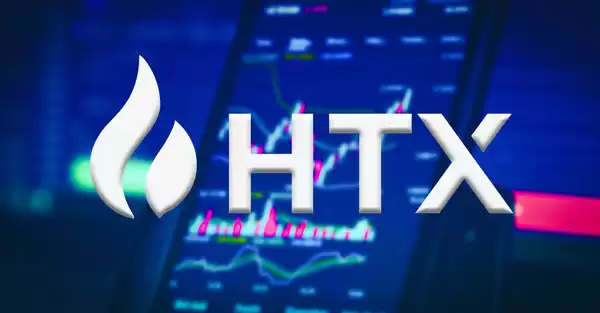-
 bitcoin
bitcoin $123963.239194 USD
1.37% -
 ethereum
ethereum $4529.082464 USD
1.07% -
 xrp
xrp $2.983640 USD
0.71% -
 tether
tether $1.000287 USD
0.02% -
 bnb
bnb $1179.874393 USD
2.99% -
 solana
solana $230.633678 USD
1.55% -
 usd-coin
usd-coin $0.999835 USD
0.03% -
 dogecoin
dogecoin $0.254240 USD
1.34% -
 tron
tron $0.341176 USD
0.15% -
 cardano
cardano $0.842285 USD
0.52% -
 hyperliquid
hyperliquid $48.537896 USD
-0.86% -
 chainlink
chainlink $21.863092 USD
-0.84% -
 ethena-usde
ethena-usde $0.999743 USD
-0.07% -
 sui
sui $3.579561 USD
-0.18% -
 stellar
stellar $0.403418 USD
2.67%
Huobi contract skills
Huobi Contract Skills empower traders to navigate the futures market effectively through a comprehensive suite of trading tools, order types, and risk management strategies.
Nov 07, 2024 at 11:53 pm

Huobi Contract Skills: A Comprehensive Guide to Mastering the Huobi Futures Market
IntroductionHuobi, one of the world's leading cryptocurrency exchanges, offers a comprehensive suite of futures trading tools and features. Whether you're a seasoned trader or just starting out, understanding and mastering these skills can significantly enhance your trading experience and profitability. This guide provides a detailed overview of Huobi contract skills, empowering you to navigate the Huobi futures market effectively.
1. Understanding Contract Basics- What are Futures Contracts? Futures contracts are standardized agreements to buy or sell an underlying asset at a predetermined price on a specified future date. They allow traders to speculate on the future price of an asset without actually owning it.
- Types of Futures Contracts on Huobi: Huobi offers perpetual futures and quarterly futures contracts. Perpetual futures are contracts with no fixed expiration date, while quarterly futures expire every three months.
- Underlying Assets: Huobi offers a wide range of futures contracts based on various cryptocurrencies, including Bitcoin (BTC), Ethereum (ETH), Litecoin (LTC), and EOS.
- Advanced Order Types: Huobi provides a variety of order types, including limit orders, market orders, stop-limit orders, and trailing stop loss orders. This versatility allows traders to execute trades sesuai conditions and risk tolerance.
- Margin Trading: Huobi offers leveraged trading, allowing traders to increase their exposure to the market with borrowed capital. Margin ratios vary depending on the underlying asset and market conditions.
- Multiple Trading Pairs: Huobi supports multiple trading pairs for each futures contract. This allows traders to diversify their portfolio and hedge risk by trading against different assets.
- Scalping: Scalping is a trading strategy that involves making frequent, small profits from short-term price fluctuations. Huobi's low trading fees and advanced order types make it a suitable platform for scalping.
- Day Trading: Day traders aim to profit from intraday price movements. Huobi's high liquidity and volatility provide ample opportunities for day trading strategies.
- Swing Trading: Swing traders hold positions for days or weeks, aiming to capitalize on larger market trends. Huobi's flexible contract durations and analysis tools support swing trading.
- Stop-Loss Orders: Stop-loss orders are used to limit potential losses by automatically closing positions when the price falls below a predetermined level.
- Position Sizing: Careful position sizing is crucial for managing risk. Traders should assess their risk tolerance and adjust their positions accordingly.
- Hedging: Hedging involves opening positions in opposite directions on different assets to mitigate risk. Huobi's multiple trading pairs facilitate hedging strategies.
- Conditional Orders: Conditional orders allow traders to set up specific conditions that trigger trades automatically. This can be useful for executing trades at optimal market conditions.
- Trading Bots: Huobi supports automated trading bots that trade according to predefined parameters. This allows traders to automate their trading strategies and minimize emotional decision-making.
- Technical Analysis Tools: Huobi provides a range of technical analysis tools, including charting, indicators, and market depth data. These tools assist traders in identifying trading opportunities and making informed decisions.
Mastering Huobi contract skills is essential for successful futures trading. This comprehensive guide provides a foundation for understanding contract basics, features, trading strategies, risk management, and advanced features. By menerapkan these skills effectively, traders can navigate the Huobi futures market with confidence and increase their chances of profitability. Remember, trading involves risk, and traders should always conduct thorough research and consider their individual risk tolerance before entering into any trades.
Disclaimer:info@kdj.com
The information provided is not trading advice. kdj.com does not assume any responsibility for any investments made based on the information provided in this article. Cryptocurrencies are highly volatile and it is highly recommended that you invest with caution after thorough research!
If you believe that the content used on this website infringes your copyright, please contact us immediately (info@kdj.com) and we will delete it promptly.
- BlockDAG, DOGE, HYPE Sponsorship: Crypto Trends Shaping 2025
- 2025-10-01 00:25:13
- Deutsche Börse and Circle: A StableCoin Adoption Powerhouse in Europe
- 2025-10-01 00:25:13
- BlockDAG's Presale Buzz: Is It the Crypto to Watch in October 2025?
- 2025-10-01 00:30:13
- Bitcoin, Crypto, and IQ: When Genius Meets Digital Gold?
- 2025-10-01 00:30:13
- Stablecoins, American Innovation, and Wallet Tokens: The Next Frontier
- 2025-10-01 00:35:12
- NBU, Coins, and Crypto in Ukraine: A New Yorker's Take
- 2025-10-01 00:45:14
Related knowledge

Practical parameter settings for a Bitcoin multi-timeframe moving average system
Sep 18,2025 at 10:54pm
Optimizing Timeframe Combinations for Bitcoin Trading1. Selecting appropriate timeframes is crucial when building a multi-timeframe moving average sys...

How can I filter out false breakouts in Dogecoin high-frequency trading?
Sep 22,2025 at 01:00am
Understanding False Breakouts in Dogecoin Trading1. A false breakout occurs when Dogecoin's price appears to move beyond a defined support or resistan...

Techniques for identifying tops and bottoms in the Bitcoin on-chain NVT model
Sep 20,2025 at 07:54pm
Understanding the NVT Model in Bitcoin Analysis1. The Network Value to Transactions (NVT) ratio is often described as the 'P/E ratio' of the cryptocur...

What does the surge in open interest in Bitcoincoin futures mean?
Sep 20,2025 at 11:18pm
Understanding the Surge in Dogecoin Futures Open Interest1. A surge in open interest within Dogecoin futures indicates a growing number of active cont...

How can I use the Ethereum USDT premium to gauge market sentiment?
Sep 18,2025 at 11:55pm
Understanding the Ethereum USDT Premium1. The Ethereum USDT premium refers to the price difference between USDT (Tether) traded on Ethereum-based plat...

What should I do if Ethereum staking yields decline?
Sep 20,2025 at 06:18am
Understanding the Causes Behind Declining Ethereum Staking Yields1. The Ethereum network transitioned to a proof-of-stake consensus mechanism with the...

Practical parameter settings for a Bitcoin multi-timeframe moving average system
Sep 18,2025 at 10:54pm
Optimizing Timeframe Combinations for Bitcoin Trading1. Selecting appropriate timeframes is crucial when building a multi-timeframe moving average sys...

How can I filter out false breakouts in Dogecoin high-frequency trading?
Sep 22,2025 at 01:00am
Understanding False Breakouts in Dogecoin Trading1. A false breakout occurs when Dogecoin's price appears to move beyond a defined support or resistan...

Techniques for identifying tops and bottoms in the Bitcoin on-chain NVT model
Sep 20,2025 at 07:54pm
Understanding the NVT Model in Bitcoin Analysis1. The Network Value to Transactions (NVT) ratio is often described as the 'P/E ratio' of the cryptocur...

What does the surge in open interest in Bitcoincoin futures mean?
Sep 20,2025 at 11:18pm
Understanding the Surge in Dogecoin Futures Open Interest1. A surge in open interest within Dogecoin futures indicates a growing number of active cont...

How can I use the Ethereum USDT premium to gauge market sentiment?
Sep 18,2025 at 11:55pm
Understanding the Ethereum USDT Premium1. The Ethereum USDT premium refers to the price difference between USDT (Tether) traded on Ethereum-based plat...

What should I do if Ethereum staking yields decline?
Sep 20,2025 at 06:18am
Understanding the Causes Behind Declining Ethereum Staking Yields1. The Ethereum network transitioned to a proof-of-stake consensus mechanism with the...
See all articles










































































